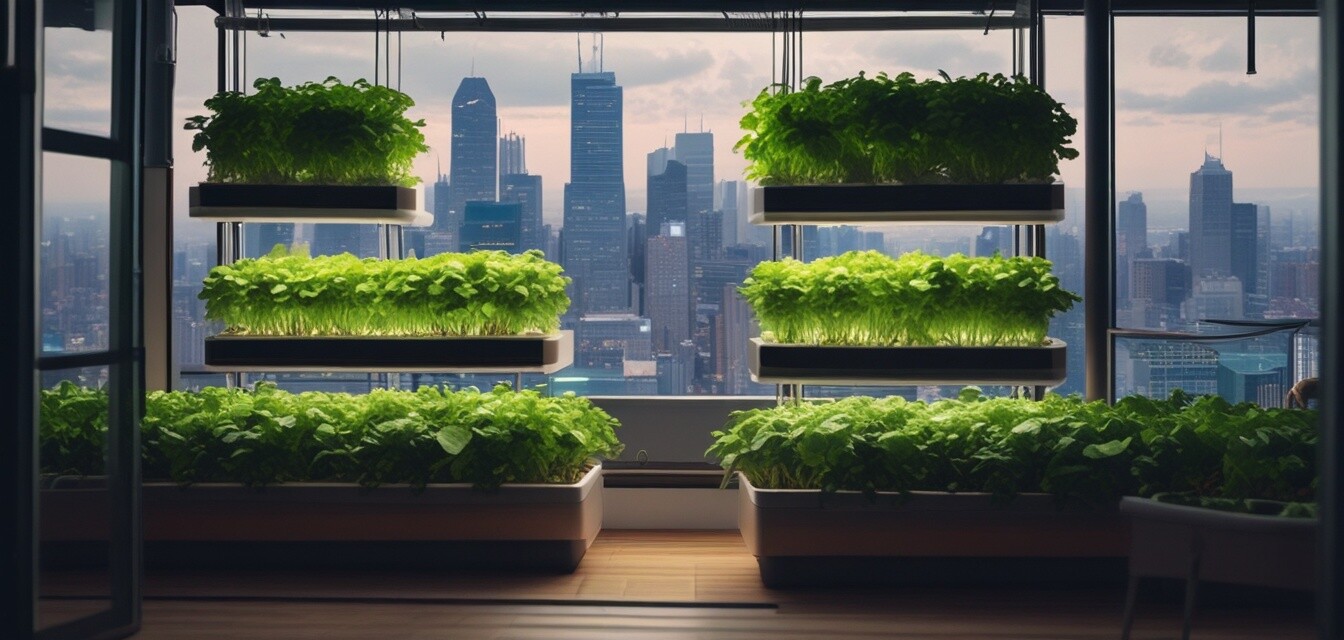
Hydroponic Gardening: Bridging the Urban-Rural Divide
Key takeaways
- Hydroponic gardening allows urban areas to grow food efficiently without soil.
- It promotes sharing of resources and knowledge between urban and rural communities.
- The method contributes to sustainability and addresses food security challenges.
- Innovations in hydroponics enhance food production in limited spaces.
- As the demand for local produce rises, hydroponic systems are becoming attractive to both urban and rural growers.
With rapid urbanization and the ongoing challenges of food security, hydroponic gardening provides an innovative solution that bridges the gap between urban and rural communities. This method not only facilitates efficient food production but also fosters collaboration and shared resources, enhancing overall food production systems.
Understanding hydroponic gardening
Hydroponic gardening is a method of growing plants without soil by using a nutrient-rich water solution. This approach offers several advantages, including:
- Efficient use of water, making it ideal for areas with limited resources.
- Better control over growing conditions, leading to faster plant growth and higher yields.
- Increased ability to grow food in urban environments, where space is often limited.
In essence, hydroponics allows for the cultivation of a variety of plants such as herbs, vegetables, and some fruits year-round, regardless of climate. As a result, urban gardeners are able to produce fresh, organic food right at their doorstep, while rural communities can benefit from these innovations as well.
Fostering connections between urban and rural communities
With hydroponics gaining popularity, numerous urban and rural initiatives have emerged that promote collaboration and knowledge sharing. Here are a few ways hydroponic gardening fosters connections:
1. Knowledge exchange programs
Urban gardens often host workshops and training sessions to teach hydroponics techniques to individuals from rural communities, while rural growers can share traditional agricultural knowledge in return.
2. Resource sharing
Urban communities can share urban hydroponic systems, tools, or even nutrient solutions with nearby rural areas. This sharing helps rural growers implement advanced gardening techniques without major investments.
3. Joint ventures and collaborations
Companies and organizations from both urban and rural settings can collaborate on projects that promote hydroponics, developing better technologies that benefit both communities.
Advantages of hydroponic gardening
| Advantage | Description |
|---|---|
| Space Efficiency | Hydroponics allows for vertical gardening, maximizing limited space in urban environments. |
| Water Conservation | This method uses up to 90% less water than traditional farming, which is crucial in areas facing water shortages. |
| Pest Management | Without soil, there are fewer pests and diseases, reducing the need for chemical pesticides. |
| Faster Growth | Plants grown hydroponically can mature faster compared to traditional soil cultivation. |
Challenges faced by hydroponic gardeners
While hydroponics offers numerous benefits, it is not without its challenges. Some of the common issues gardeners may encounter include:
- Initial Setup Costs: The investment in hydroponic systems can be significant.
- Technical Knowledge Requirements: A good understanding of nutrients and system maintenance is necessary for success.
- Dependence on Technology: Failure of equipment can result in loss of crops, necessitating reliable back-up systems.
Promoting sustainability through hydroponics
As global challenges related to climate change and food insecurity rise, hydroponics is regarded as a sustainable agricultural practice. It reduces the carbon footprint related to food transportation by allowing consumers to grow their own food locally. Furthermore, as urban areas become more focused on sustainability, hydroponic gardens are leading the way.
Future of hydroponic gardening
The future of hydroponic gardening looks promising, with ongoing research and development leading to more efficient systems and affordable setups. Here are some trends in hydroponics to watch:
- Growth of community-based hydroponic systems.
- Integration of smart technology and IoT in monitoring plant health.
- Increased focus on sustainable practices and organic nutrient sourcing.
Conclusion
Hydroponic gardening stands as a testament to the possibilities of innovative food production methods. By connecting urban and rural communities, it promotes shared resources and knowledge, leading to enhanced food security and sustainability. As we continue to navigate the complexities of modern food systems, hydroponics emerges as a vital tool in bridging the urban-rural divide.
Pros
- Efficient use of space and resources
- Year-round food production
- Promotes community engagement and collaboration
- Reduces transportation costs and emissions
Cons
- Initial setup costs can be high
- Requires technical knowledge for effective management
- Dependence on technology
- Potential for equipment failure
Learn more about hydroponics
To explore more about hydroponic gardening systems, consider checking out the following categories on our website:

